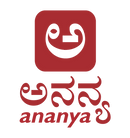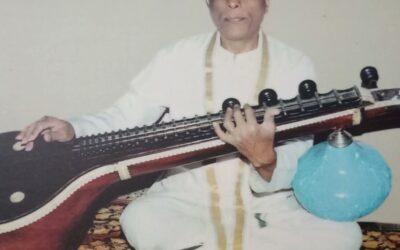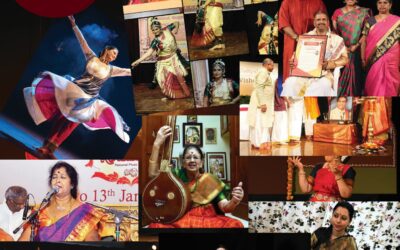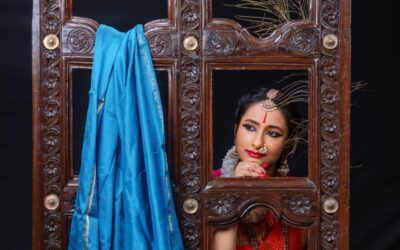Kaḷāsa – Its Dynamics and Aesthetic Delineation in Accordance with the Textual Traditions of the Medieval To Modern Period
– Padmini Shreedhar
Classical dance is well identified by its technical features and its unique specifications in execution. Classical dance has evolved over the centuries and a series of developments are noted in regard to its movement vocabulary. Periodic nṛtya lakṣaṇa[1]or technical manuals have documented the contemporary practicing tradition and it poses a challenge in understanding the nuances down the genesis. ‘Kaḷāsa’, one such classical dance element, obsolete today, was a compulsory inclusion in the deśi classical dance tradition of the medieval period. The treatises from the 11th century to the 17th century mention the term ‘kaḷāsa’ as an integral feature of classical dance choreographies. Its role was prominent in the nṛtta and nṛtya compositions of the pre-colonial times. It is intriguing to find that kaḷāsas are practiced till today, only in Kathakali, the classical dance of Kerala.
The etymology of the term kaḷāsa is deconstructed as: “Ka = happiness, joy, pleasure and ‘Lās’ = to dance, grace, adorn. So combining the two syllables – kaḷāsa means dance which is pleasurable, happy and joyful performance” (Purecha X: 2010). She further adds that kaḷāsas are elegant movements which demand anukarana especially, imitating nature’s abundance. The movements are deśigned to emulate such phenomena witnessed in nature like a lightening, the animals like crane or a female deer. The epistemology of the kaḷāsa can be understood by the study of certain periodic technical manuals.
By the turn of the 12th century, the deśi [2]tradition of dance displayed novel innovations based on Mārga[3]. Some of the major observations are as follows: the usage of hand gestures replaced the mārga Nṛta hastas; deśi utpluti karanās[4]were added to vocabulary; creation of deśi cāris [5]occurred; a new concept of deśi lasyāngās[6]emerged as per Saṅgīta ratnakara and Nṛta ratnavali. Saṅgīta Samayasara describes lasyāngās as ‘deśyāngās[7]’ and Nṛta ratnavali of Haripaladeva calls them as ‘nṛttāngās’. One of the mentioned deśyāngās’ is the kaḷāsa and is explained as a ‘finale’ movement in accordance to the tāḷa. “Kaḷāsas means the establishing of a statuesque dance pose at the end of a dance segment in exact synchronisation with tāḷa and laya according to Devanna Bhatta (Saṅgīta Muktavali)” (Satyanarayana 261:1998). He adds to say that kaḷāsa were applied as ending movements in middle of a dance to depict different sections in patterns set to laya and tāḷa.
Saṅgīta ratnakara was the first medieval text to mention the term Kaḷāsa. Here the reference is to the kaḷāsa as part of the choreography seen in Gaundali-a prominent deśi dance composition. The study on kaḷāsas was undertaken for a recent reconstruction of a deśi dance composition Sulādi. Saṅgīta Muktavali and Damodara’s Saṅgīta Darpana mention a dance composition – cindu, in which the dance concludes with a kaḷāsa as a flourishing end of jati patterns and graceful gatis. Nṛtta ratnavali also describes the cindu nṛta which includes both lyrics and abstract dance. Here youthful damsels dance to yatis[8] along with usage of hand gestures, “dance includes graceful footwork, caris, lasyāngas interspersed with kaḷāsas providing as rhythmic denouements” (Satyanarayana 330:1998).
Nartana Nirnaya of Pundarika Vittala, explains a deśi Nṛtya – Kattane Dharu, a composition of rhythmic patterns along with lasyāngas in sync with grace and delight. In this dance, kaḷāsa plays a main role in between to depict divisions in the dance as well as a concluding movement named ‘arddi’. Is this term in parlance to the ‘arudi’ of today? Arudi is used as a crucial ending pattern in dance compositions -varnams, jatiswarams and thillanas of present times. Interestingly Vedasuri, in his work Saṅgīta makaranda elaborates to describe kaḷāsa as a visual form. He refers to it as an integral part of a dance composition ‘kattara’ composed to seven tāḷas and seven segments. Here he also adds that kaḷāsas were used in between or interspersed along with other dance elements. He further mentions that kaḷāsas are ending dance segments used as interludes, especially in vādya prabandhas[9].
Devanacharya of Saṅgīta Muktavali documents kaḷāsa as finale movement in which the dancer stands in a beautiful finishing stance after aesthetic bending movements and lyrical gestural dance. He compiles kaḷāsa as one of the ‘deśi lasyangas’. “It seems that when the Nṛtya adhyaya[10] and Nṛta ratnakosa[11] were written, kaḷāsa or the concluding movement was considered an important feature of presentation and its varieties were profilerating.” (Bose 247:2007). Both the medieval treatises describe six variations and their twenty-two sub varieties. The four main features of ‘deśi Nṛtya’ namely sruti, gita, kaḷāsa and tāḷa along with the mention of seven alankāra tāḷas of all deśi dances is a worthy point to be noted as mentioned in Maharana Khumba’s Nṛtta Ratna Kosha. This gives us a clear picture that kaḷāsa was an important dance element in deśi tradition.
Both Nṛtya adhyaya and Nṛtta Ratna kosha list the six kaḷāsas with twenty-two variations namely- Vidyut, Khadga, Mrga, Baka, Plava (manduka in Nṛtta Ratna kosha) and Hansa kaḷāsa. Six variations of Vidyut kaḷāsa; four of Khadgha kaḷāsa; one of Mrga; four of baka; four of plava and three variations of Hansa kaḷāsa are recorded in the texts.
In a few other treatises, kaḷāsas are documented with different connotation and understanding of its dynamics. Purushottama Misra in his work Saṅgīta Narayana in the 17th century describes kaḷāsaas a Karana. He has compiled the six kaḷāsas as before but added ten more variations increasing the number from twenty-two to thirty-two. He names the kaḷāsa as “kaḷāsa karana” unique to this text and one can observe he has taken a novel approach in understanding the movements. It is intriguing to note that the discussion on kaḷāsa in a couple of 21th century secondary sources remark that Maharana Khumbha calls it kaḷāsa karana though the 20th century scholar, Mandakranta bose says the term kaḷāsa karana was unique to Saṅgīta Narayana text only.
Vema’s Saṅgīta chintamani (15th century A.D.) describes kaḷāsa as one of the ‘deśinṛtangam’ and adds that after the dancer performs pillamaru (an aesthetic bending dance movement) to various mnemonic syllables, concludes with a beautiful kaḷāsa. This explanation is also followed by Veda in Saṅgīta makaranda.
Saṅgīta Darpana of Damodara pandita gives a graphic explanation of the choreographical elements to be incorporated in a sulādi and one of the features mentioned is the Kaḷāsa. He elaborates on each tāḷa of the seven tāḷa prabandhas out of which ēka, jhampe tāḷa, triputa tāḷa are specified with kaḷāsa as one of the main elements to be included in the delineation. The researcher, after a thorough study of the above details and understanding the dynamic description of it, has taken the liberty to use the kaḷāsa as an arudi or ending movement in between each prabandha of a Suladi. Also, the kaḷāsa has been utilised to demarcate each culminating tāḷa and the beginning of the next one, justifying its role as a finishing movement.
Vidyut kaḷāsa of types one, two, three and khadgha kaḷāsa type four have been adapted by the researcher into the suladi as finishing movements. The adaptation was based on the Lakṣaṇa prescribed by the author, to suit the dance composition. The author also recommends the use of the kaḷāsa to depict various emotions like veera and moha. The hastas are given specific positions with lines. Various jumps, leaps, lifting movements are specified too in their usage. Keeping in mind the prescriptions, the researcher has tried her best to incorporate kaḷāsa in the suladi wherever necessary.
This researcher would like to conclude with a few points on self-understanding of the terminology – kaḷāsa and its characterstics. As the nṛtta hastas and the hasta abhinaya of Abhinaya Darpana had taken precedence over the nṛtta hastas of Natyasastra in the medieval period, it was natural for the dancers to have adapted the former in the kaḷāsa. The usage was simpler when compared to the mārga nṛta hastās and thus must have gained more popularity in practice. As the definition of the mārga Karana – “Hasta pāda samayōgaha nṛtasya Karanam bhavēt”, a similar connotation seems to have been applied to the kaḷāsa and was termed as kaḷāsa karana.
Kaḷāsa are beautiful, aesthetic movements and appear completely distinct from today’s Bharathanatya element, ‘arudi’, in its usage. Though abhinaya Darpana is widely followed in the present times, the nṛta hastas of the text, as prescribed, are seldom applied in the adavus or nṛta patterns, especially swastika, kataka vardhana and hamsasya. The hastas prescribed by the authors for kaḷāsa include ardhachandra, musti, karkata, utsanga which are rarely used in the aesthetic and abstract movement patterns of today’s practicing traditions, but pleasantly find a place in the kaḷāsa. This realization might kindle an interest in today’s choreographer’s comprehension to adapt the kaḷāsa in their works.
Kaḷāsas were forgotten since post-modern period, the last of the texts which record the dance element are Saṅgīta makaranda and Saṅgīta Narayana of the seventeenth century. All deśi dances until the beginning of the 18th century display kaḷāsa as part of their choreography. R.Satyanarayana enumerates, notable poetic and prose references of Kannada creative literature from the 11th to 17th century that phrase kaḷāsa, as beautiful movements.
Was the kaḷāsa more prominent in the Karnataka tradition? As per Lakṣaṇa and Lakṣhya sources, Goundali, kattare, cindu and sulādi were popular deśi dances in the Karnataka region in which kaḷāsas were invariably used. Nṛta ratnavali also records kaḷāsa as part of cintu nṛta, displaying similarity in Andhra and Karnataka regions.
The above discussion imparts an integral position to kaḷāsa in the medieval period dance compositions. The reconstruction and reutilisation of kaḷāsa in today’s choreographies are bound to lend both aesthetic and utility values.
[1] Technical manuals on dance
[2] Medieval period 11th to 17th centuryA.D.
[3] Natyasastra guidelines followed till 10th centuryA.D.
[4] Medieval period leaping movements
[5] Medieval period leg movements
[6]Medieval period graceful prescription for dance execution
[7] Another term for kaḷāsa
[8] Time measure patterns for choreography
[9] Instrumental compositions
[10] Text of Ashoka malla of early medieval period
[11] Text by Maharana Khumbha of medieval period

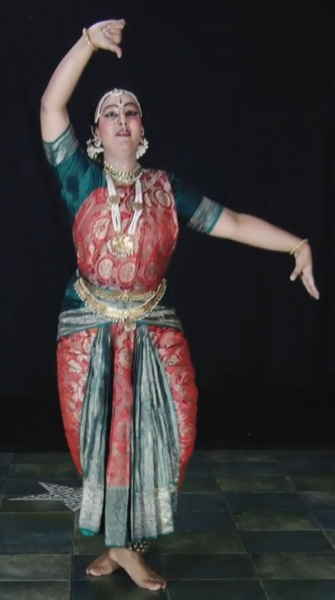
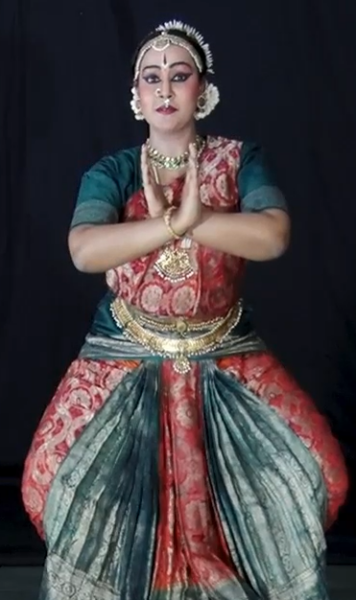
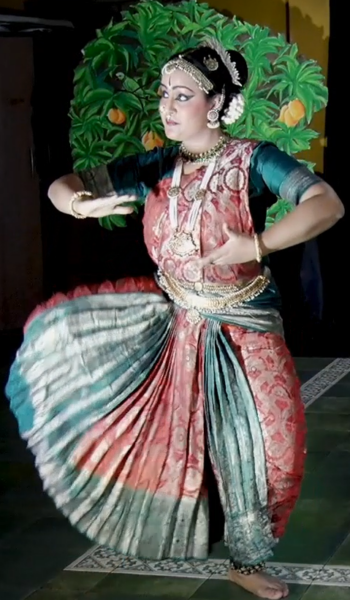
*************
